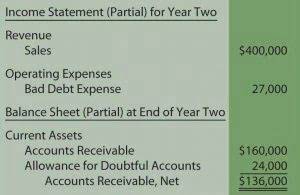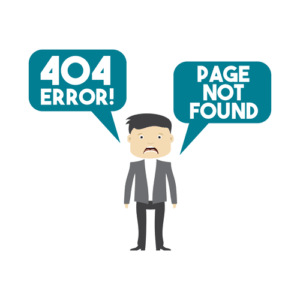It is available in four subscription levels, Simple Start, Essentials, Plus, and Advanced, and is ideal for any business without complicated job-costing requirements. However, because it’s integrated completely within QuickBooks, the sale, credit card fee, and cash deposit are all recorded automatically as they occur. The best thing about using QuickBooks https://www.online-accounting.net/ Payroll is that it’s integrated with QuickBooks, so your financial statements are always up to date as of the latest payroll run. You have to purchase a QuickBooks Payroll subscription to run payroll, but you have several levels of service to choose from to fit your needs. Also, any expense entered can be marked as billable and assigned to a customer.
By keeping a detailed record of financial transactions, businesses can gain better insights into their financial health and make more informed decisions. With accounting software options like QuickBooks’ small-business products, detailed financial information about your business is always at your fingertips. Financial statements — such as a profit and loss statement, balance sheet or statement of cash flows — are a window into the health of your business and help you spot problems and opportunities. QuickBooks is the most popular accounting software suite that is widely used by small businesses to manage their financial transactions. You can use it to invoice customers, pay bills, generate reports, and print reports to be used to prepare taxes. It comes in a variety of editions and has web-based and desktop programs.
If you want, you can also invite them to view the reports themselves and download whatever they need. In this article, we will discuss what QuickBooks is and how it works so that you can understand the different ways in which it can help you save time and be on top of your financial statements. In the world of bookkeeping, Quickbooks has become a trusted ally for businesses of all sizes. Among its many functions, a few standout features are undeniably helpful.
No, there’s no free version of QuickBooks for businesses, but there’s a 30-day free trial for new users. Meanwhile, QuickBooks Online Accountant is free for professional bookkeepers. For accounting software with free options https://www.quick-bookkeeping.net/ check out our top-recommended free accounting software. Collaborating with a QuickBooks ProAdvisor can be a valuable experience that optimizes your accounting and financial management processes for efficiency and accuracy.
One way to achieve this is by leveraging the power of Quickbooks and its multitude of functions. One of the most beneficial features is the integration with third-party apps. By seamlessly connecting Quickbooks with other software applications, businesses can extend the capabilities of their accounting system. This integration allows smoother data transfers and streamlines processes, increasing productivity and accuracy. These Quickbooks functions help streamline bookkeeping processes, automate tasks, and provide valuable insights into a company’s finances. And with its user-friendly interface, Quickbooks continues to be the go-to accounting software for businesses worldwide.
With solid invoicing capabilities, various templates, and payment reminders, FreshBooks offers advanced functionality. QuickBooks fully operates from the cloud and encourages users to integrate to the Online version to get access to all the features and integrations offered. There are still plenty of desktop users or ways to find support through community pages, Youtube, and other forums. Desktop users will still need to create an online account to take advantage of any support, updates, and features of the software.
QuickBooks ProAdvisor
You can add a payment to a customer invoice in QuickBooks by using the «Add Payment to Customer Invoice» function. This feature ensures that the money is available for your customers before they pay you, or when making advance payments on specific invoices. Currently, QuickBooks is offering two different specials; you can either try it free for 30 days or sign up and get a 50% discount on your first three months. Again, QuickBooks has many reports available to analyze your bills and expenses. If you have a record of bills available, you can track upcoming payments easily to ensure timely payments of bills.
For example, the software cannot detect errors or alert you if your tax filings are inaccurate. A professional ensures your financial records are both complete and accurate. There have always been alternatives to QuickBooks, and accounting software options are highly effective at doing all of the same essential tasks with each differing in offers and price. This software level supports up to 30 licenses and is great for large, layered industries like construction, distribution, manufacturing, and retail. You can manage numerous locations and users, large transactions, and customize your workflows. Pricing depends on your business operations, size, and needs so it is best to speak to a QuickBooks representative.
QuickBooks Products
You can set up payment schedules, process checks, initiate direct deposits, and more. Assign multiple permissions to payroll employees, as well as manage tax-exempt employees, workers’ compensation, and various other tasks. QuickBooks even goes as far as automating payroll, with same-day direct deposits and an easy timesheet approval process. In addition to their 24/7 customer support, they offer tax penalty protection in the event you receive a penalty. You can use QuickBooks financial statements when opening a business bank account, applying for a business credit card or loan or when planning for the following year.
- QuickBooks allows you to enter new bills and expenses and keep track of them automatically by connecting your bank and credit card accounts to the platform.
- This feature enables businesses to track their income and expenses seamlessly.
- These integrated apps are designed to help you simplify the various aspects of your business, from bill management and payment acceptance to cash flow forecasting.
- To access fixed asset accounting in QuickBooks, select Advanced accounting in the left menu bar and then click Fixed Asset Accounting.
- QuickBooks has its own payroll function that can calculate and run payroll as often as you need automatically.
Having an expert in accounting services will help with benefiting from all the resources QuickBooks has to offer. While Wave doesn’t come with some of the more advanced features as QuickBooks does, Wave https://www.bookkeeping-reviews.com/ still has a self-service support portal and all the basic functions you need for a startup business. If you are looking for a comprehensive accounting software solution, QuickBooks is a great option.
Learn How We Can Impact Your Business Growth
Save time and reduce errors when you connect your bank to get a full view of your finances. A Live Bookkeeper cannot begin cleaning up your past books until they receive the required supporting documentation, which your bookkeeper will request from you after your first meeting. Once your bookkeeper receives all the necessary documentation, they’ll typically complete your cleanup within 30 days. In some cases, your cleanup may take longer depending on timeliness of documentation and the complexity of your books. Whether you’re a new user or a pro, get your questions answered with one of our free, live webinars.
It can also support businesses that sell products or services in multiple jurisdictions, with the ability to calculate and track sales tax rates and rules for each jurisdiction. QuickBooks, the industry-leading software, offers a plethora of powerful functions that can transform the way you handle your business’s finances. Which QuickBooks function is most useful, it depends on the specific needs and requirements of a business. The most useful QuickBooks function is the financial management feature for tracking income and expenses. This function helps businesses maintain accurate records and make informed financial decisions.
This allocation is a requirement for calculating taxable income and very cumbersome to do by hand. QuickBooks can also remind you to order inventory automatically when quantities are low. You can also add bills in QuickBooks when you receive them so that QuickBooks can help you track upcoming payments. Our guide on how to enter bills into QuickBooks Online covers this process in detail. Meanwhile, you can ensure that you pay your bills on time by creating an A/P report. This report will provide you with the details of your current and past-due bills.
You may be interested in our review of QuickBooks Time for details of the platform’s pricing and features. For all its capabilities, QuickBooks online can be challenging for those who aren’t fully prepared or know all its features. QuickBooks assists in managing all aspects of your business’s finances and remains the forerunner for small businesses, the self-employed, large enterprise, and any sort of business in between. Bank-level security ensures your data is safe and accessible only to you and the people you choose to share it with. Match them to bills to stay organized and ready for tax season with everything in one place. Stay on top of your orders and quantities while managing your inventory in real-time.
You have easy access to all the common financial statements like balance sheet, profit and loss (P&L) statement, cash flow statements and taxes filed. You can take a printout of these statements for your accountant and send it across to them at the time of filing or invite them to view these statements without needing a login ID or password. To summarize, the QuickBooks Function is most useful for small businesses and meets various businesses and professionals. The powerful features of QuickBooks can help businesses improve their efficiency, accuracy, and financial decision-making, leading to greater success and growth. The payroll add-on calculates payroll automatically as often as you want.
The QuickBooks Online mobile app is available for download on Google Play and App Store, but you need an active subscription to use its features. Available in Plus and Advanced, the inventory management feature helps you track the quantity and cost of your inventory. As you sell inventory, QuickBooks will allocate a portion of your inventory to the cost of goods sold (COGS) automatically, which is an expense account that reduces your income.
Generate profit and loss reports through the “Report Center” to get a snapshot of your accounts receivable, budgets, cash flow, etc. An income statement, showing your profit margin, allows you to see how well your business is doing and if costs need to be cut in certain areas. QuickBooks is used for bookkeeping, invoicing clients, tracking expenses, financial reporting, payroll management, and inventory tracking. QuickBooks Cloud Accounting offers a lot of functionality to streamline the quickbooks accounting process. This is because you must be through to the multiple functions and stay organized to utilize its full potential.





